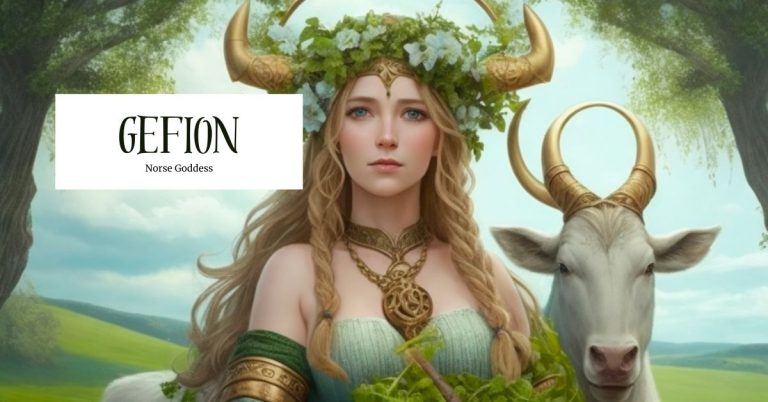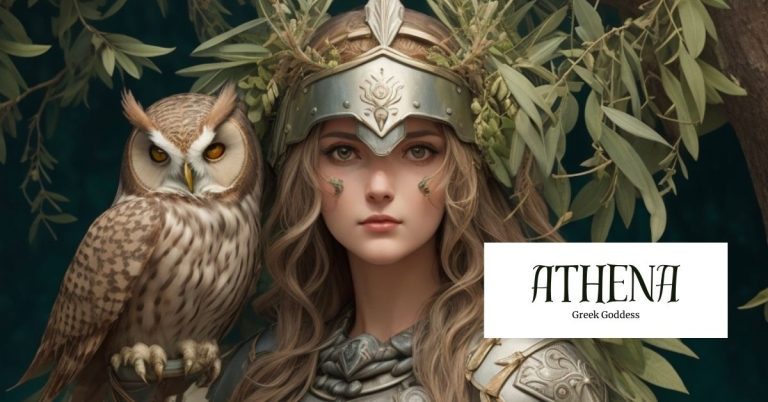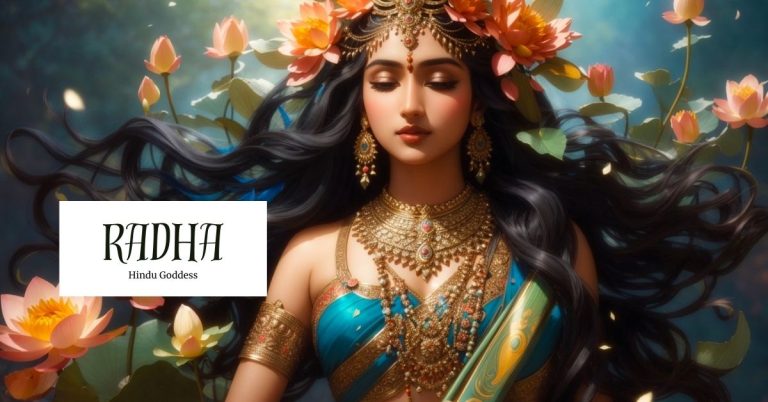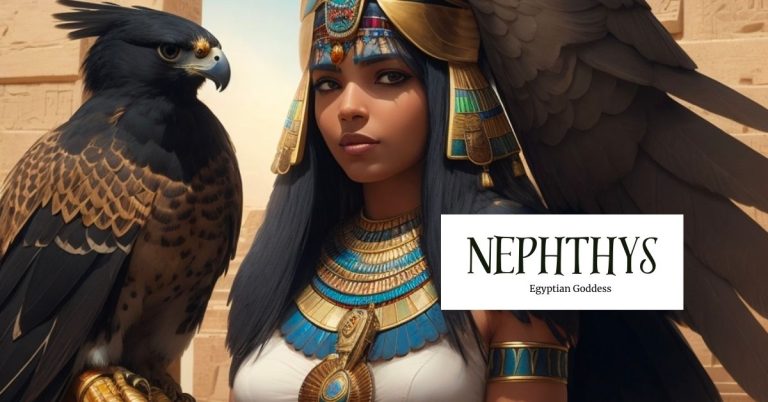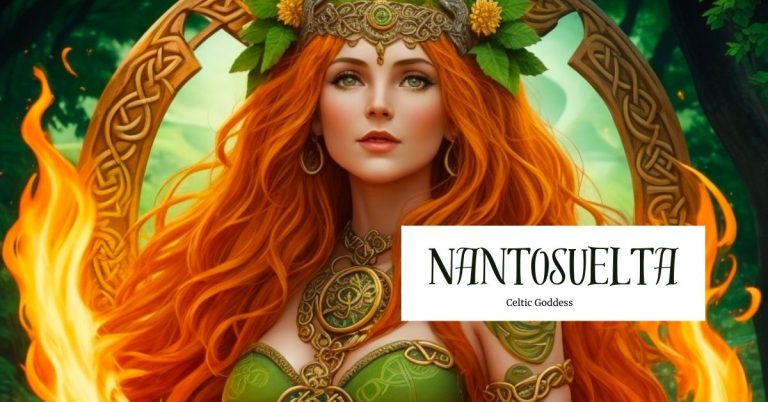Gaia: Goddess of the Earth
Gaia, often revered as the primal Earth goddess in Greek mythology, holds a significant place in the pantheon of ancient deities. Her name, derived from the Greek word for “Earth,” encapsulates her essence as the personification of the Earth itself.
Gaia is a multifaceted deity with various titles, attributes, and symbols that reflect her dominion over the natural world and her role in creating the cosmos.
This article delves into the intricate tapestry of Gaia’s mythology, shedding light on her roles, abilities, characteristics, traits, symbols, and the festivals and rituals dedicated to her worship.
Overview of Gaia
The name “Gaia” or “Gaea” is derived from the ancient Greek word “γῆ” (gē), meaning “Earth” (Wikipedia Contributors). It is an apt name for the divine being who embodies the very essence of our planet. As one of the Protogenoi, the earliest of the gods who emerged at the beginning of time (“GAEA (Gaia) – Greek Goddess of the Earth (Roman Terra, Tellus)”), Gaia stands as the physical manifestation of Earth, a divine force responsible for the creation of the universe. According to Greek mythology, Gaia is the mother of all, having given birth to not only the Earth but also the heavens (Uranus) and the sea (Pontus) through self-fertilization (Kapach).
Source: Pixels
Titles
- The Earth Goddess
- The Great Mother
- The All-Nourishing
- Mother Earth
Abilities
One of Gaia’s most fundamental abilities is the creation of life, which has resulted in the birth of countless divine and mortal beings (Miate). As the nurturing mother of all living creatures, she can shape the land, sculpting mountains, carving valleys, and shaping plains (“GAEA (Gaia) – Greek Goddess of the Earth (Roman Terra, Tellus)”).
In addition to her role as a shaper of the planet’s physical features, Gaia has the power to control nature in all its aspects. She governs the seasons, orchestrating the transition from one to another, and has a hand in the weather patterns that affect our world. She is also responsible for the growth of plants and crops, ensuring the Earth’s fertility and abundance (Wikipedia Contributors). Her gift of prophecy further emphasizes the goddess’s connection to the natural world. She possesses deep wisdom and insight, which enable her to foresee future events. This prophetic ability makes her an oracle of great importance in the divine hierarchy, sought after by other gods and mortals (Kapach).
Lastly, Gaia’s powers transcend the physical realm, as she is the ultimate connector of all life. Her interconnectedness with every living being underscores her omnipresence and importance in maintaining the ecosystem’s delicate balance. In essence, Gaia’s abilities define her role as the Earth goddess, attesting to her vital role in the intricate web of life itself.
Characteristics
Gaia’s physical appearance is a powerful reflection of her identity as the Earth goddess. Depicted as a majestic and primordial figure, Gaia’s iconic representation invokes the essence of the natural world itself (“GAEA (Gaia) – Greek Goddess of the Earth (Roman Terra, Tellus)”). Her imagery often features lush green hair resembling cascading grass or leaves, a vivid embodiment of the Earth’s verdant abundance (Miate). This portrayal connects her intimately with the plant life she nurtures and sustains. Furthermore, Gaia’s divine form is adorned with floral motifs, emphasizing her profound connection to the natural world (Kapach). These adornments, often seen in her hair or as part of her attire, symbolize her role as the Earth’s ultimate nurturer, responsible for the growth and flourishing of vegetation (Wikipedia Contributors).
Source: Pinterest
Traits
Gaia exudes a sense of serene power and ancient wisdom. Her presence encompasses the nurturing and formidable aspects of the Earth itself, reflecting the dual nature of the natural world she personifies (“GAEA (Gaia) – Greek Goddess of the Earth (Roman Terra, Tellus)”). This duality underscores the reverence and respect ancient cultures held for her, recognizing that she, like the Earth, could provide sustenance and abundance while demonstrating her capacity for wrath when her creations were threatened (Kapach).
Symbols
The symbols representing Gaia’s essence and dominion over the Earth are deeply rooted in mythology and cultural significance. For instance, Gaia is often depicted as a globe or a woman with the Earth as her body, emphasizing her inseparable connection to the planet (“GAEA (Gaia) – Greek Goddess of the Earth (Roman Terra, Tellus)”). This representation reinforces her identity as the Earth personified and the nurturing mother of all living beings (Kapach). Additionally, fertile soil is a potent symbol linked to Gaia, representing her capacity to provide for the world’s flora and fauna and foster growth and abundance (Wikipedia Contributors).
Moreover, the cornucopia, or horn of plenty, is yet another emblem associated with Gaia. Overflowing with fruits and vegetables, this symbol signifies her abundance and the Earth’s inexhaustible bounty, reminding us of her role as the provider of sustenance and the source of the world’s riches (Miate). Flowers and vegetation also hold significant meaning, reflecting Gaia’s close connection to plant life and the changing seasons. Through vibrant and blooming flowers, Gaia’s influence on the Earth’s flora is depicted, emphasizing life cycles and renewal (Kapach). Lastly, Gaia’s association with geological features like mountains and caves highlights her role as the Earth’s sculptor, signifying her creative power in shaping the landscape and reinforcing her influence over the Earth’s physical aspects (“GAEA (Gaia) – Greek Goddess of the Earth (Roman Terra, Tellus)”).
Source: Pinterest
Festivals and Rituals
The worship of Gaia played a significant role in the religious practices of ancient Greece, with various festivals and rituals dedicated to the Earth goddess (“GAEA (Gaia) – Greek Goddess of the Earth (Roman Terra, Tellus)”) expressing profound gratitude for the Earth’s boundless abundance and seeking her blessings for the well-being of the people and the land. Among the most notable of these festivals was Thesmophoria, a unique and exclusive women’s festival observed in Athens and several other Greek cities (Kapach). During Thesmophoria, women engaged in intricate rituals, which included offerings and sacrifices, beseeching Gaia and Demeter for a bountiful harvest and emphasizing the profound connection between the Earth’s fertility and the successful growth of crops (Miate).
Furthermore, various local rituals and sacrifices were conducted throughout Greece to seek Gaia’s favor (Wikipedia Contributors). These rituals served multiple purposes, including invoking her blessings for agriculture, seeking protection from natural disasters, and ensuring the community’s general well-being (“GAEA (Gaia) – Greek Goddess of the Earth (Roman Terra, Tellus)”). The diverse ways in which Gaia’s worship was integrated into the fabric of daily life and the natural cycles that sustained the ancient Greeks attest to the significance of her role in ancient Greek religion (Kapach).
Source: Pinterest
Legends associated with Gaia
The rich lore surrounding Gaia, the Greek goddess of the Earth, is a fascinating subject to explore. From her powerful presence in ancient tales to her lasting influence on human civilization, there is no shortage of intrigue regarding this enchanting Mother Earth.
Origin story
The origin story of Gaia is a fascinating and nuanced tale steeped in Greek mythology and its rich storytelling tradition. According to one prominent version of her creation myth, Gaia is one of the Protogenoi, the primeval deities who emerged at the dawn of creation (“GAEA (Gaia) – Greek Goddess of the Earth (Roman Terra, Tellus)”). Her existence is intimately intertwined with the very inception of the cosmos, emphasizing her integral role in shaping the universe. Gaia’s birth is characterized by spontaneity and primordial force, as she is often described as having come into existence spontaneously, representing the Earth itself (Wikipedia Contributors).
In some variations of her origin story, Gaia is believed to be the offspring of Eros, the god of love (Kapach). This adds a layer of complexity to her character, suggesting that her being is intimately linked to the Earth and the creative force of love. This dual lineage reflects her role in fostering life and the interconnectedness of all living beings on Earth. Overall, the origin story of Gaia serves to underscore her profound significance as a foundational deity in Greek mythology. Whether born from Chaos or linked to Eros, her existence as the Earth goddess reinforces her status as a symbol of life, fertility, and the enduring power of the natural world (“GAEA (Gaia) – Greek Goddess of the Earth (Roman Terra, Tellus)”).
Source: Wikipedia
The Mighty Gaia: Cosmic Liberation
One of the most iconic legends in Greek mythology tells the story of Gaia’s pivotal role in overthrowing Uranus, her son and the primordial god of the sky. This myth showcases Gaia’s maternal instincts and unwavering determination to liberate her imprisoned children, the Titans (Hamilton). According to the narrative, Ouranos had locked up the Titans within Gaia’s womb, causing her immense pain and suffering. In desperation, Gaia called upon her son Cronus, a Titan, for help. Armed with a mighty sickle forged by Gaia, Cronus castrated Ouranos, ending his oppressive rule over the heavens and ushering in a new cosmic era (Graves).
This story symbolizes Gaia’s duality as a nurturing mother and a formidable deity who takes action when her offspring are in danger. It also highlights the significant influence of Gaia and the Titans in Greek mythology and their roles in shaping the universe’s destiny. Gaia’s involvement in this myth underscores her status as a foundational figure in Greek mythology and her ability to alter the fate of the divine world (Hamilton).
Source: Pinterest
Protecting the Future King of Gods
Another profound legend in Greek mythology that revolves around Gaia is her instrumental role in protecting and nurturing Zeus, the future king of the gods. According to mythology, Zeus’s father, Cronus, habitually devoured his children due to a prophecy that one of his offspring would overthrow him (Wikipedia Contributors). Fearing for her newborn son’s safety, Gaia devised a cunning plan to protect him from Cronus’s insatiable hunger. She concealed the infant Zeus on the island of Crete, a place believed to be beyond Cronus’s reach. To ensure Zeus’s well-being and upbringing, Gaia entrusted him to the care of the nymph Amalthea and the bee goddess Melissa (“GAEA (Gaia) – Greek Goddess of the Earth (Roman Terra, Tellus)”).
As Zeus matured, he ultimately challenged and overthrew his tyrannical father, Cronus, fulfilling the prophecy and establishing his rule over the heavens and divine hierarchy (Kapach). This strategic move by Gaia to safeguard Zeus proved pivotal in the unfolding of Greek mythology. It highlights Gaia’s enduring influence as the Earth goddess and as a key figure in Greek mythology.
Source: Pinterest
Influences of other religions/cultures on Gaia
The concept of an earth deity has been a prevalent theme throughout various cultures. In ancient Greece, the worship of Gaia was intertwined with the broader pantheon of Greek gods and goddesses. This is not unique to Greek mythology, as similar earth-mother deities exist in other cultures, such as the Egyptian goddess Geb and the Roman goddess Terra (Miate). The parallels in these deities suggest a shared human fascination with the idea of an earth deity, reflecting the universal reverence for the Earth as a life-giving force.
Gaia’s influence transcends the boundaries of Greece and has been incorporated into modern earth-centered and ecological spiritual movements. Within these movements, Gaia is often viewed as a symbol of environmental consciousness and the interconnectedness of all life on Earth (“GAEA (Gaia) – Greek Goddess of the Earth (Roman Terra, Tellus)”). It is remarkable how the concept of an earth deity has persisted throughout history and inspires modern-day movements toward greater environmental awareness.
Modern appearances
Gaia has emerged as a compelling symbol in contemporary culture that resonates with ecological and environmental movements worldwide. Her representation goes beyond mythology and taps into a deeper understanding of the Earth’s interconnectedness and the pressing need for responsible stewardship of our planet. This contemporary revival of Gaia’s symbolism reflects a growing awareness of environmental issues and the recognition of humanity’s profound impact on the natural world (Wikipedia Contributors).
One notable example of Gaia’s influence can be seen in the “Gaia hypothesis,” a scientific theory proposed by British scientist James Lovelock in the 1970s. The Gaia hypothesis posits that the Earth functions as a self-regulating, living organism, where all components—living and non-living—are intricately connected and collectively maintain the conditions necessary for life. Lovelock’s theory has profoundly shaped environmental science and has prompted a reevaluation of how humanity interacts with the environment (Wikipedia Contributors)
Source: Pinterest
Final thoughts
Gaia, the Greek goddess of the Earth, remains an iconic figure transcending the ages. She has inspired cultures and religions worldwide, from her nurturing motherly role to her powerful deity status. Gaia’s continued significance in modern times reminds us of our responsibility to protect the Earth and preserve its balance. As we strive towards a more sustainable future, let us remember the timeless connection between humanity and the natural world, embodied by the enduring legacy of Gaia.
References
“GAEA (Gaia) – Greek Goddess of the Earth (Roman Terra, Tellus).” Theoi.com, 2017, www.theoi.com/Protogenos/Gaia.html.
Graves, Robert. The Greek Myths. London, Penguin Books, 2017.
Hamilton, Edith. Mythology. 1942. New York, Little, Brown, 2013.
Kapach, Avi. “Gaia.” Mythopedia, 9 Dec. 2022, mythopedia.com/topics/gaia.
Miate, Liana. “Gaia.” World History Encyclopedia, 16 Mar. 2023, www.worldhistory.org/Gaia/.
Wikipedia Contributors. “Gaia.” Wikipedia, Wikimedia Foundation, 22 Nov. 2019, en.wikipedia.org/wiki/Gaia.


